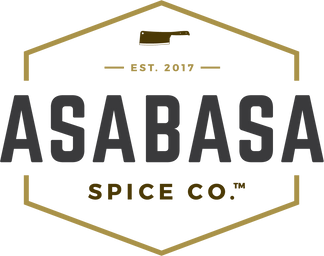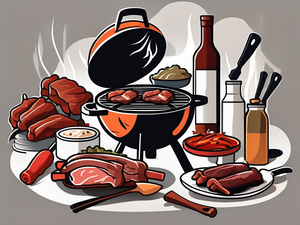The Ultimate Guide to Barbeque: Tips, Techniques, and Recipes
Barbeque, often referred to as BBQ, is a popular cooking technique that has been enjoyed for centuries. From the smoky flavors to the juicy meats, barbeque has a way of bringing people together and satisfying their taste buds. Whether you are a newcomer to the world of barbeque or a seasoned pitmaster, this ultimate guide will provide you with valuable tips, techniques, and mouth-watering recipes to elevate your barbeque game.
Understanding the Basics of Barbeque
Barbeque, a culinary practice that has stood the test of time, is not just a way of cooking meat; it is a cultural phenomenon that has captivated people around the world. The art of barbeque has its roots in ancient times when humans discovered the magic of cooking meat over an open flame. The sizzling sound, the aroma of the smoke, and the unique flavor that comes with it - all these elements combined to create a culinary experience like no other.
The history of barbeque is as rich and diverse as the flavors it produces. From the early practices of hanging meat over a fire to slow-cooking in pits, barbeque has evolved into an art form. It has become a way for communities to come together, to celebrate, and to showcase their culinary prowess. Each region around the world has its own unique barbeque traditions, reflecting the rich history and cultural influence of this cooking method.
The History of Barbeque
Barbeque, as we know it today, has its origins in ancient civilizations. The concept of cooking meat over an open flame was discovered by our ancestors, who quickly realized that this method added a unique and delicious flavor to the meat. From the nomadic tribes of Africa to the ancient civilizations of Mesopotamia, barbeque was a common practice across different cultures.
As time went on, barbeque techniques evolved and became more sophisticated. In ancient Rome, for example, barbeque was a popular cooking method, with large open-air grills used to cook meat for grand feasts. The Romans even had specialized chefs, known as "carnifices," who were skilled in the art of barbeque.
Barbeque also played a significant role in the colonization of the Americas. European explorers, such as Christopher Columbus and Hernán Cortés, encountered indigenous peoples who practiced barbeque cooking. They brought this knowledge back to Europe, where it eventually spread to other parts of the world.
Today, barbeque has become a beloved culinary tradition that brings people together. Whether it's a backyard cookout, a competitive barbeque competition, or a family gathering, the act of barbequing has become a way to celebrate food, culture, and community.
Different Types of Barbeque Styles
When discussing barbeque, it is impossible not to mention the various regional styles that have developed over time. Each style brings its own distinct character to the table, showcasing the unique flavors and techniques of the region.
Kansas City-style barbeque is known for its sweet and tangy flavors. The meat is slow-cooked over a low heat, allowing the flavors to meld together and create a mouthwatering experience. Kansas City-style barbeque is often served with a thick, tomato-based sauce that adds a burst of flavor to the meat.
Texas-style barbeque, on the other hand, is all about the smoky and spicy taste. It is characterized by slow-cooking the meat over indirect heat, using wood such as oak or mesquite to create a rich smoky flavor. The meat is typically seasoned with a dry rub, allowing the natural flavors of the meat to shine through.
Other notable barbeque styles include Carolina-style, which is known for its vinegar-based sauce and pulled pork, and Memphis-style, which features slow-cooked ribs with a dry rub. Each style has its own loyal following and unique flavor profile, making the world of barbeque a truly diverse and exciting culinary landscape.
Essential Barbeque Equipment
To embark on your barbeque journey, it is important to have the proper equipment. A quality grill or smoker is essential for achieving optimal results. Whether you prefer a charcoal grill, a gas grill, or a dedicated smoker, choosing the right equipment will greatly impact the flavor and texture of your barbeque creations.
In addition to a grill or smoker, having the right tools is crucial. Tongs, spatulas, and meat thermometers are essential for handling and monitoring the meat as it cooks. These tools ensure that your meat is cooked to perfection, with the right level of tenderness and juiciness.
When it comes to fuel sources, charcoal and wood chips are popular choices among barbeque enthusiasts. Charcoal provides a consistent heat source and imparts a smoky flavor to the meat, while wood chips add an extra layer of complexity to the taste. Experimenting with different types of wood, such as hickory, apple, or cherry, can elevate your barbeque to new heights.
As you embark on your barbeque journey, remember that patience and practice are key. Barbeque is not just a cooking method; it is a labor of love that requires time, attention to detail, and a passion for creating delicious food. So fire up your grill, gather your friends and family, and get ready to experience the magic of barbeque.
Mastering Barbeque Techniques
Barbeque, a beloved culinary art form, is not just about grilling meat over an open flame. It is a process that requires skill, patience, and attention to detail. To truly master the art of barbeque, one must understand the intricacies of preparing the grill or smoker, managing heat, and perfecting the art of smoking.
Preparing Your Grill or Smoker
Before diving into the barbeque process, it is crucial to properly prepare your grill or smoker. This involves more than just a quick wipe down. Cleaning the cooking surface thoroughly ensures that no remnants of previous meals interfere with the flavors of your current creation. Additionally, preheating the grill or smoker allows it to reach the optimal temperature for cooking, ensuring even heat distribution and reducing the risk of undercooked or overcooked meat.
Creating the ideal cooking environment is another important aspect of grill or smoker preparation. This can be achieved by strategically placing heat-resistant barriers, such as aluminum foil or heat deflectors, to ensure that the heat is evenly distributed. By doing so, you can avoid hot spots and ensure that your barbeque cooks evenly.
Understanding Heat Management
Controlling and managing heat is the key to achieving perfectly cooked barbeque. It is a delicate dance between fire and food that requires careful attention. One way to manipulate the airflow and control the temperature is by adjusting the vents on your grill or smoker. Opening the vents allows more oxygen to fuel the fire, increasing the heat, while closing them restricts the airflow, reducing the temperature.
Utilizing indirect heat cooking methods is another crucial aspect of heat management. By creating hot and cool zones on your grill or smoker, you can control the level of heat that your barbeque receives. This technique is particularly useful when cooking larger cuts of meat that require longer cooking times. By placing the meat in the cooler zone, you can slow-cook it to perfection, allowing the flavors to develop and the meat to become tender.
Perfecting the Art of Smoking
Smoking is a technique that adds a whole new dimension of flavor to your barbeque. It involves slow-cooking meat over low heat and infusing it with aromatic wood smoke. The type of wood you choose plays a significant role in the final flavor profile of your barbeque. Different woods, such as hickory, mesquite, or applewood, impart distinct flavors that can elevate your dish to new heights.
Timing is also crucial when it comes to smoking. The duration of smoking can vary depending on the type of meat and the desired level of smokiness. It is a delicate balance between allowing enough time for the flavors to develop and avoiding over-smoking, which can result in a bitter taste.
Mastering the art of smoking requires patience and practice. It is about finding the right balance of heat, smoke, and time to create a perfectly smoked barbeque that melts in your mouth and leaves you craving for more.
So, whether you are a seasoned pitmaster or a novice griller, understanding the importance of preparing your grill or smoker, managing heat, and perfecting the art of smoking will undoubtedly elevate your barbeque game. Embrace the process, experiment with flavors, and let your passion for barbeque shine through every mouthwatering bite.
The Science Behind Barbeque
How Marinating Works
Marinating meat before barbequing is a common technique that not only enhances flavor but also improves texture. By using a combination of acidic ingredients, such as vinegar or citrus juice, and flavorful seasonings, the marinade breaks down proteins and adds moisture to the meat, resulting in a tender and delicious end product.
The Role of Rubs and Spices
Rubs and spices are essential components of barbeque that add depth and complexity to your dishes. Whether it's a dry rub or a wet marinade, the right combination of herbs, spices, and other flavorings can take your barbeque to the next level. Experimenting with different rubs and spices allows you to personalize your barbeque and cater to your taste preferences.
The Maillard Reaction and Barbeque
The Maillard reaction is a chemical process that occurs when food is heated, resulting in the browning and development of complex flavors. Barbeque relies on the Maillard reaction to create that desirable caramelized crust on the surface of meats. Understanding the science behind this reaction allows you to harness its power and achieve mouth-watering barbeque results.
Exploring Barbeque Recipes
Classic Barbeque Dishes
No barbeque guide would be complete without a collection of classic recipes. From tender ribs slathered in tangy sauce to succulent pulled pork sandwiches, these timeless dishes are sure to please any barbeque enthusiast. Follow step-by-step instructions and tips to recreate these crowd-pleasing favorites in the comfort of your own backyard.
Vegetarian and Vegan Options
Barbeque is not limited to meat lovers. There are plenty of creative and delicious vegetarian and vegan options that showcase the versatility of barbeque techniques. Grilled vegetables, plant-based burgers, and even barbeque tofu are just a few of the mouth-watering possibilities that allow everyone to enjoy the flavors of barbeque.
Innovative Barbeque Recipes
If you're looking to take your barbeque skills to the next level, exploring innovative recipes is a great way to challenge yourself and impress your guests. From unique flavor combinations to experimental cooking techniques, these recipes push the boundaries of traditional barbeque and introduce exciting new flavors to your palate.
Now armed with knowledge about barbeque basics, techniques, and a range of delicious recipes, it's time to dive headfirst into the world of barbeque. Embrace the rich heritage of this beloved cooking method, experiment with flavors, and create mouth-watering meals that will make you the hero of every barbeque gathering. Remember, the key to becoming a barbeque master lies in practice, patience, and a passion for creating unforgettable culinary experiences.


